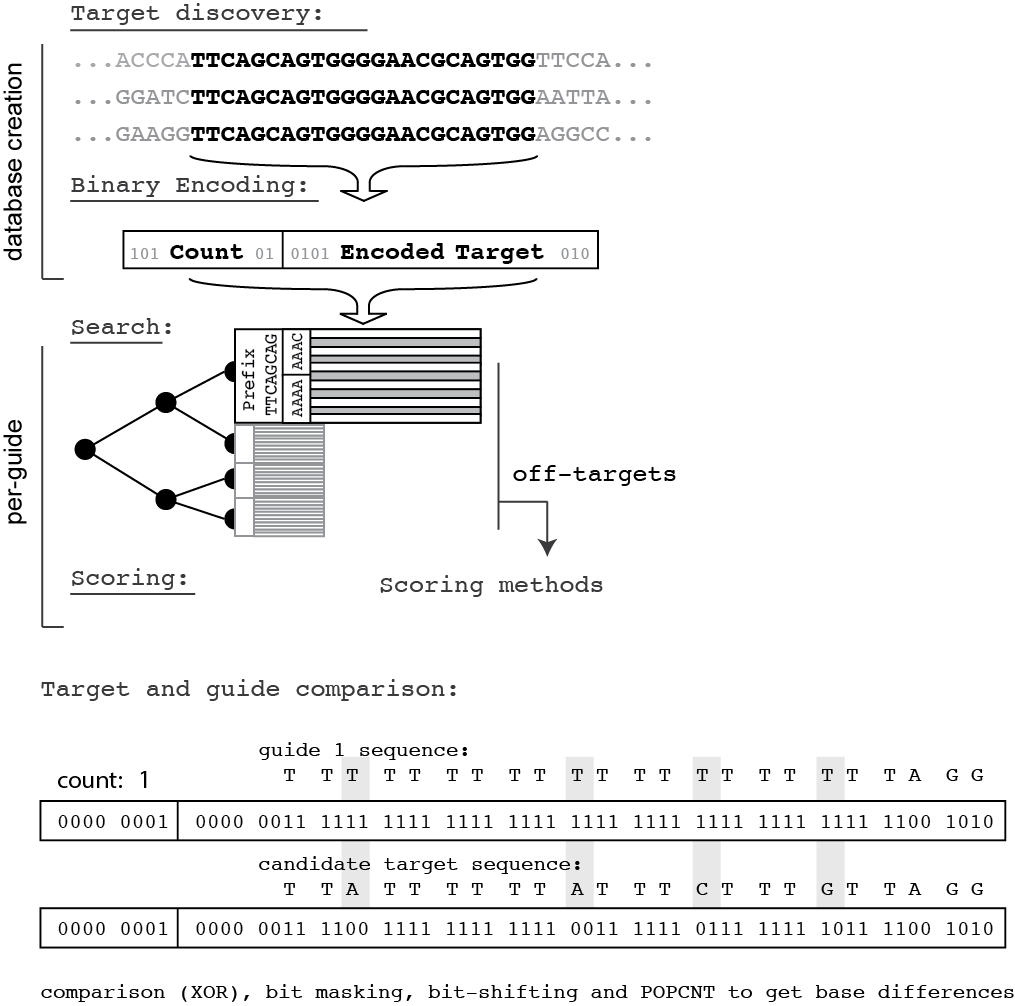-
Notifications
You must be signed in to change notification settings - Fork 10
Binary database format
The tool uses a custom binary format that compresses the genome hits for a target sequences into binary values. Values are stored as using Java's default big-endian format. The database itself contains all the packed long values in a compressed file, using htslib's block-compressed file readers and writers. The header file sits alongside the database and provides a lookup table for the target database.
The block format in the database is:
- block type: currently 0 for linear, 1 for sub-indexed (long)
- if indexed, for the set index size, a series of long values that describe the size and location of sub-indexes
- After any header, a series of targets, with X position encodings, set by the count number in the target encoding
The header format:
-
64 bit magic value (long)
-
64 bit version number (long)
-
64 bit internal enzyme number (long, see StandardScanParameters.scala for the enumerated enzymes)
-
64 bit number of bins (long)
-
for the number of bins in the header:
- 64 bit offset of this block in the file (long)
- 64 bit size of this block in the file (in uncompressed bytes, long)
- 64 bit number of targets contained within the bin (int)
-
for each contig in the input reference file:
- the contig name, followed by a '=' and it's index position in the reference
For lookup we perform something like the following:
